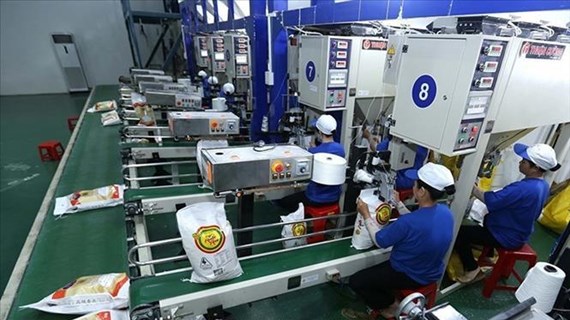Automobile sector faces uphill road
Production dropped by 40 percent for the automobile industry, showing
that the sector has not yet recovered from the 2012 economic crisis,
said participants in an automobile workgroup at the Vietnam Business
Forum held recently.
Production dropped by 40 percent for the automobile industry, showing
that the sector has not yet recovered from the 2012 economic crisis,
said participants in an automobile workgroup at the Vietnam Business
Forum held recently.
The industry sold 30,414 cars in the first four months of this year, a moderate increase compared with last year's sales of 29,503 cars.
Vietnam has a population of nearly 90 million, which is estimated to increase to 100 million in the next 10 years. GDP now stands at 1,300 USD per head and is expected to rise to 4,000 USD by 2020.
There is one car for five hundred people, so the industry has significant potential to develop. However, manufacturers are in a difficult position as supply currently exceeds demand. Toyota Vietnam sold nearly 25,000 cars in 2012, far short of its production capacity of 36,500, according to the Vietnam Automobile Manufacturers' Association.
Similarly, Ford Vietnam sold nearly 5,000 cars despite its capacity of 14,000 and General Motors Vietnam sold 5,600 with a capacity of 20,000.
Vietnam also imposes one of the highest subsidy taxes in Asia. The price of domestic cars is usually two or three times higher than the world market price. Tariffs of 80 percent are imposed on car imports, in addition to a special consumption tax of 45-70 percent and VAT of 10 percent.
These costs affected the price of devices and products, said workgroup members, which also affected Vietnam's ability to compete with other Asian countries. Meanwhile, the lack of a development plan drastically slowed domestic manufacturing.
To solve the problem, the workgroup proposed the Government cut the special consumption tax to 50 percent for now and eventually eliminate it entirely. They also asked the Government to lift the consumption tax for motorbikes 170cc and over.-VNA
The industry sold 30,414 cars in the first four months of this year, a moderate increase compared with last year's sales of 29,503 cars.
Vietnam has a population of nearly 90 million, which is estimated to increase to 100 million in the next 10 years. GDP now stands at 1,300 USD per head and is expected to rise to 4,000 USD by 2020.
There is one car for five hundred people, so the industry has significant potential to develop. However, manufacturers are in a difficult position as supply currently exceeds demand. Toyota Vietnam sold nearly 25,000 cars in 2012, far short of its production capacity of 36,500, according to the Vietnam Automobile Manufacturers' Association.
Similarly, Ford Vietnam sold nearly 5,000 cars despite its capacity of 14,000 and General Motors Vietnam sold 5,600 with a capacity of 20,000.
Vietnam also imposes one of the highest subsidy taxes in Asia. The price of domestic cars is usually two or three times higher than the world market price. Tariffs of 80 percent are imposed on car imports, in addition to a special consumption tax of 45-70 percent and VAT of 10 percent.
These costs affected the price of devices and products, said workgroup members, which also affected Vietnam's ability to compete with other Asian countries. Meanwhile, the lack of a development plan drastically slowed domestic manufacturing.
To solve the problem, the workgroup proposed the Government cut the special consumption tax to 50 percent for now and eventually eliminate it entirely. They also asked the Government to lift the consumption tax for motorbikes 170cc and over.-VNA












